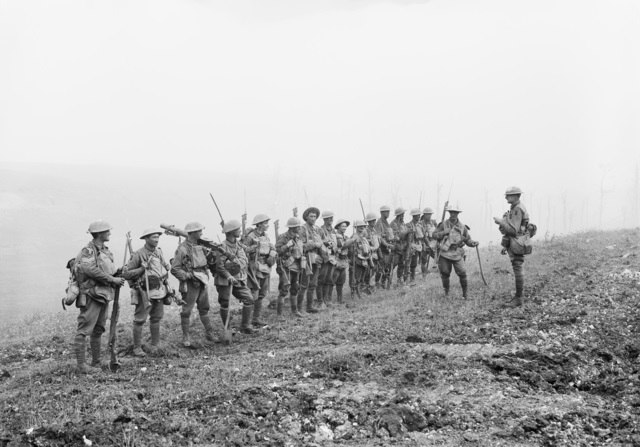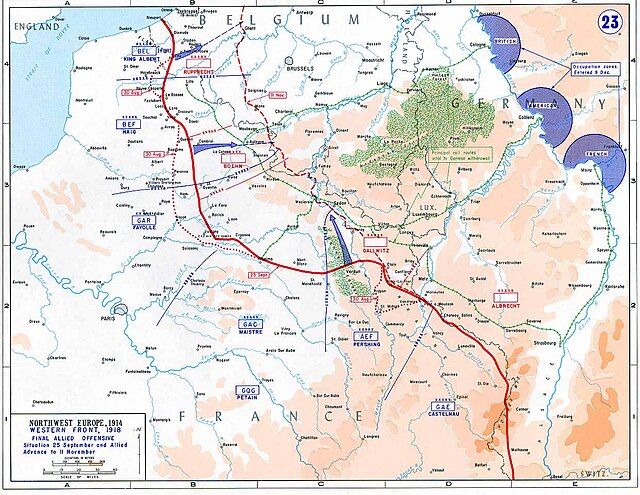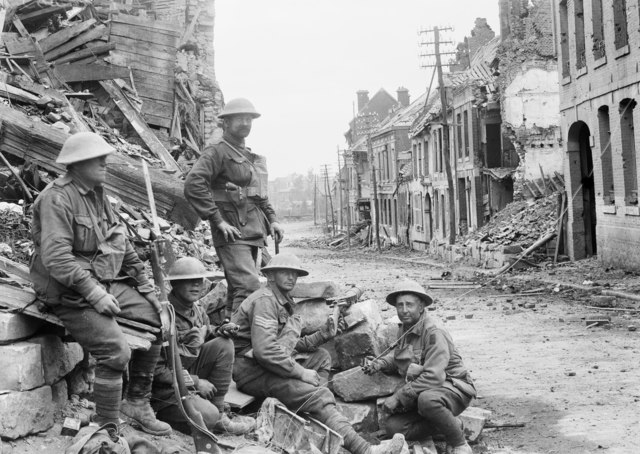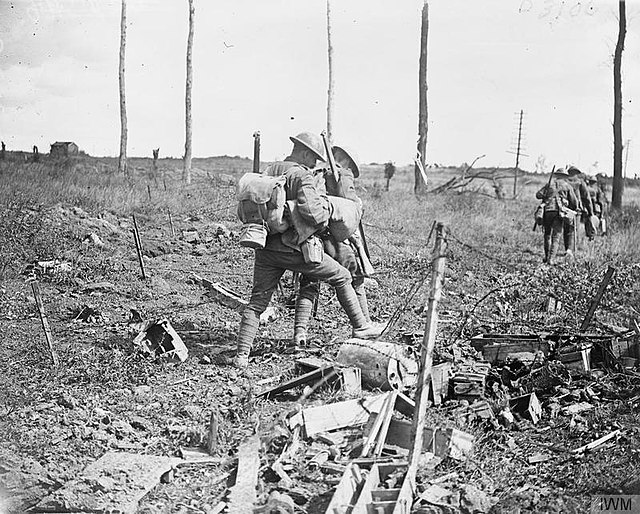The Battle of Amiens, also known as the Third Battle of Picardy, was the opening phase of the Allied offensive which began on 8 August 1918, later known as the Hundred Days Offensive, that ultimately led to the end of the First World War. Allied forces advanced over 11 kilometres (7 mi) on the first day, one of the greatest advances of the war, with Gen Henry Rawlinson's British Fourth Army and Gen Marie Eugène Debeney's French First Army playing the decisive role. The battle is also notable for its effects on both sides' morale and the large number of surrendering German forces. This led Erich Ludendorff to later describe the first day of the battle as "the black day of the German Army". Amiens was one of the first major battles involving armoured warfare.
8 August 1918 by Will Longstaff, showing German prisoners of war being led towards Amiens
Men of the Royal Garrison Artillery loading a 9.2-inch howitzer near Bayencourt just before the battle
British Mark V tank (B56, 9003) of the 2 Battalion, Tank Corps traversing a ditch at the side of a road at Lamotte-en-Santerre, 8 August 1918.
An Australian Lieutenant addressing his platoon before the advance onto Harbonnières which is obscured by smoke from heavy shellfire.
The Hundred Days Offensive was a series of massive Allied offensives that ended the First World War. Beginning with the Battle of Amiens on the Western Front, the Allies pushed the Imperial German Army back, undoing its gains from the German spring offensive.
Allied gains in late 1918
1 September 1918, Péronne, Somme. A machine gun position established by the Australian 54th Battalion during its attack on German forces in the town
Troops of the Royal Inniskilling Fusiliers, 36th (Ulster) Division, advancing from Ravelsburg Ridge to the outskirts of Neuve Eglise, 1 September 1918
Canadian troops shelter in a ditch along the Arras-Cambrai road








